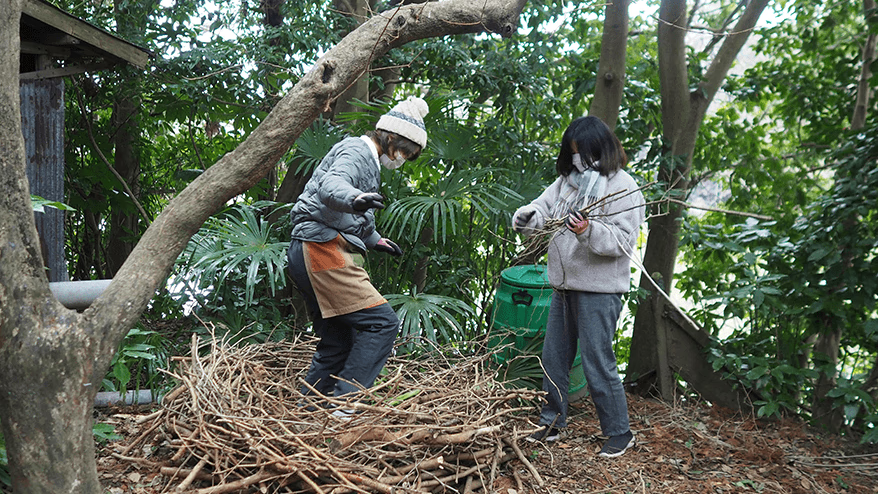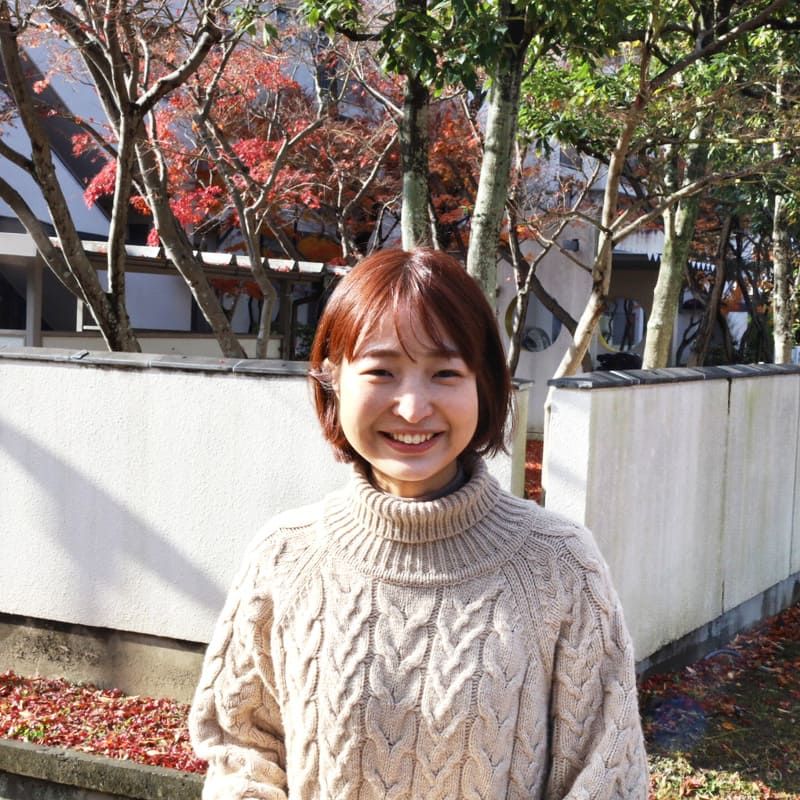こんにちは、馬場はるかです。
モノサスではコーダーとしてお仕事をしています。
以前、お花屋さんに勤めていたこともあり、時間を見つけては、会社にある植物のお手入れをしています。
次第に、もっと植物に詳しくなりたいという気持ちが強くなり、ご縁もあって「ガーデンキュレーター即戦力キャンプ」というものに参加することになりました。
今回は「ガーデンキュレーター即戦力キャンプ」の様子、そこで学んだバイオネストづくりについてご紹介させていただきます。
「ガーデンキュレーター即戦力キャンプ」とは
「ガーデンキュレーター即戦力キャンプ」は、『ガーデンキュレーター』を養成するために株式会社Q-GARDEN さんが開催されている講座です。
ガーデンキュレーター即戦力キャンプ・2022冬
まだ始まったばかりの講座のようで、私が参加したのは第2回目でした。『ガーデンキュレーター』とは何かというのもまだまだ模索中のようですが、直訳すると、「お庭の学芸員」となります。
私なりの解釈では、造園業においては必ず、「お客様である施主」と「実際に造園を担当する施工主」、そして「植物」という3つの関係性があります。
この3つを常に上から俯瞰し、みんなが幸せになるようにバランスを取る人が『ガーデンキュレーター』なのではないかと思っています。
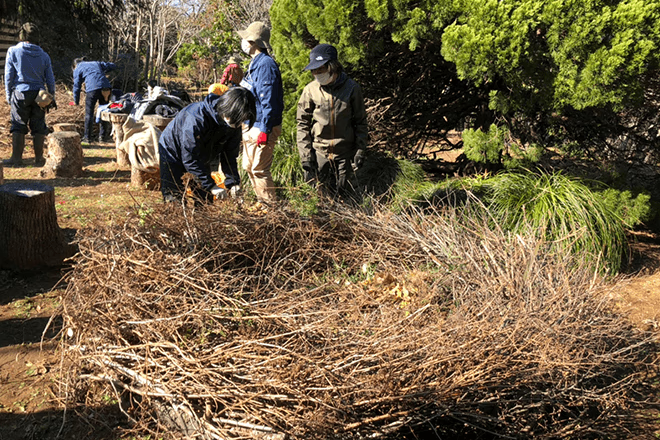
キャンプは、1泊2日で、参加者は約20人ほど。
皆さん、ガーデナーや苗の生産者さんなど各分野のプロとして働く方々で、講師には『造園植栽術』という本を書かれた山本紀久さん。
私の知識や経験ではきっとついていくので精一杯だろうと内心冷や冷やしながら参加しましたが、皆さんこんな私を温かく迎えてくださり、今抱えている造園業界の問題や、これからの展望など深い話も沢山してくださいました。
キャンプ1日目は、農薬についての情報共有と、ガーデンキュレーターとして携わった案件報告など。2日目は、バイオネスト作りと意見交換会をしました。
1日目の農薬について、印象に残っているお話を少しご紹介します。
農薬というと、農作物を害する虫や雑草などを駆除するために使う殺虫剤や除草剤など人工的に作られた薬のことだと思っていたのですが、農薬取締法では、農作物を加害する害虫の天敵も農薬とみなすそうです。そのため、アブラムシを食べるナナホシテントウムシや、田んぼの雑草や害虫を食べるアイガモなども農薬と考えることができるそう。これには大変驚きました。
また、特定の虫にのみ効く農薬や天然成分で作られた農薬などもあるようですが、そもそも植物は、健康で元気な状態であれば害虫も寄ってこないし病気にもならないそうです。
改めて、日々のお手入れや植物に合った環境を整えることの重要性を感じました。
バイオネストとは
バイオネストは大きい鳥の巣のような見た目をしています。剪定枝などで枠をつくり、中にお庭のお手入れで出た不要な枝や枯れ葉を捨てると自然にそのままかえるという手作りコンポストのようなものです。
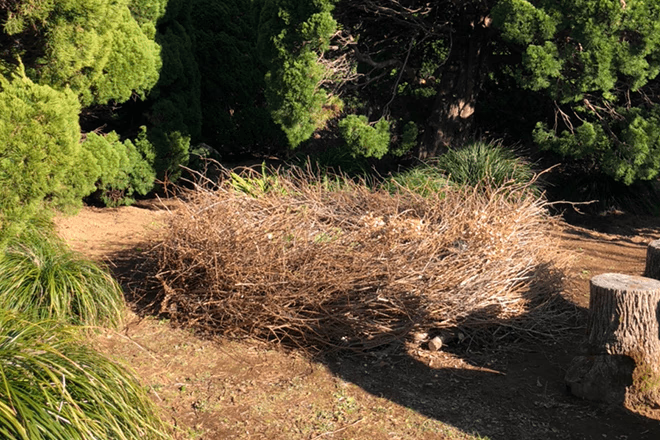
一般的に剪定作業では、大量に出た枝葉を搬出し廃棄するための手間と費用がかかります。しかし、バイオネストを置いておくことで、その手間と費用を削減でき、車の入りにくい山や公園での作業も楽になります。
また、枝で出来ているため自然の中にも溶け込みやすく、作り方も難しくないので気軽に作ることができます。
キャンプ2日目に参加者の皆さんと、山本先生に教えていただきながら、バイオネストを作ったのですが、復習もかねてもう一度作ってみたく、ものさすサイト事務局のきみさん宅のお庭をお借りして、きみさん、そしてものさす事務局の齊藤さんとバイオネスト作りをさせて頂きました。初心者が作ったバイオネストでも雨風に耐えられるのか、そして時間が経つとどのようになるのかも観察していけたらと思います。
バイオネストの作り方
とても広いきみさんのお宅。林のお手入れはなかなかできていないということで、少しではありますが、剪定をさせていただきました。
その後、剪定した枝を一か所に集めます。
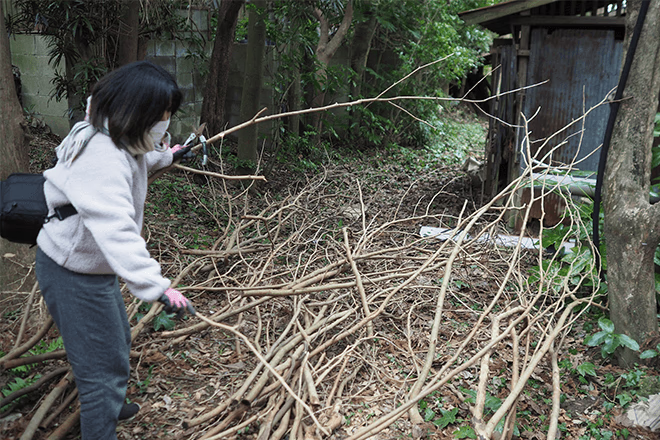
これを円形に重ねやすいよう、60センチほどの長さに切っていきます。
この作業が一番大変でした。剪定する際に短めに切っておくと後々楽かもしれません。
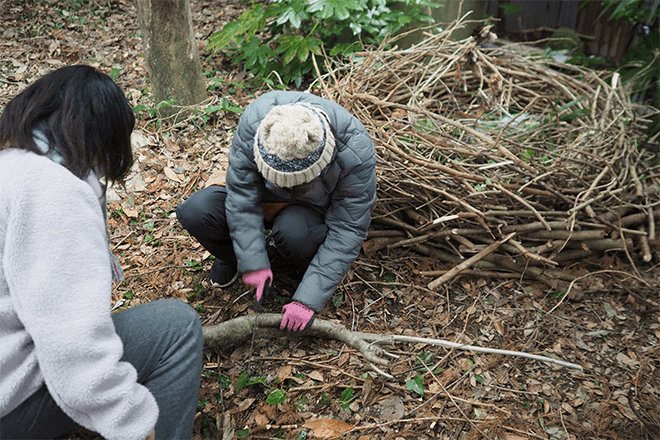
太い枝と細い枝はわけて使うので、少し離して置いていきます。
全部切り終わったところで、バイオネストになるよう、木を並べていきます。
まずは土台となりそうな太めの木を並べます。
2段、3段積み木のように組み上げたら、今度は細めの枝を土台の枝の隙間に差し込んでいきます。
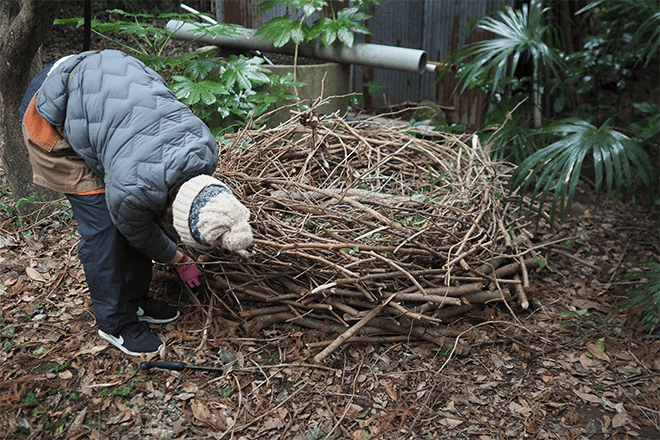
この時、枝は常に同じ向き、同じ方向から、なるべく水平になるよう差し込むと、枝同士がしっかりと絡み合い頑丈に、そして仕上がりもきれいになります。
飛び出しているのは危ないので、他の枝に絡ませて入れ込んだり、ハサミで切ったりしながら進めていきます。
同じ箇所ばかりしていると偏りが出てしまうので、丸くなるようにたまに遠くから眺めてみると綺麗に仕上がります。
最後に余った枝や枯れ葉などを中に入れて完成です。
今回は使えるスペースが広かったので、直径1mほどのバイオネストができました。
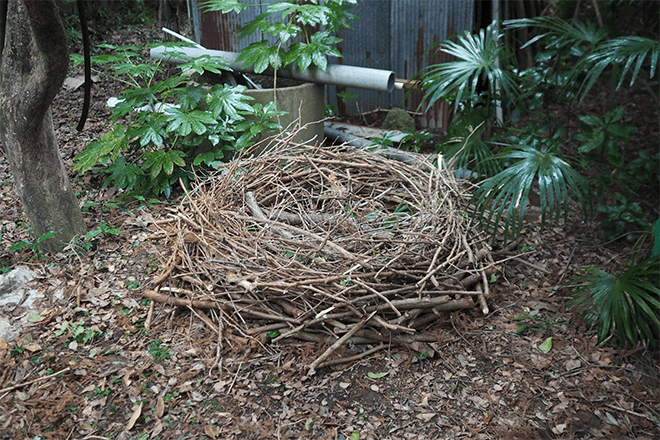
あれほどあった剪定枝は、全部このバイオネストに収まりました。
数日後、きみさんに経過を聞いてみると、作成した日から強風の日も雨の日も、びくともしていないそうです。
次の剪定時期に嵩がどのくらい減っているのか観察するのが楽しみです。
私はアパート暮らしのため、鉢で植物を育てているのですが、土に栄養がなくなるから肥料をたまにあげて、鉢がきつくなってきたら新しい土にして一回り大きな鉢に植え替える。という育て方を当たり前のようにしていました。
しかし、バイオネスト作りを通して、「そうか、本来自然にあるものはみな循環していくものなのか」「土は落ち葉や雑草などがあることで、微生物が増えて生きた土になるのか」と、落ち葉や枝を捨てずに土にかえすことの重要性を感じました。
それからは、道に落ちている落ち葉も、料理中に出た生ごみも、土を良くする材料に見えて仕方がありません。アパート暮らしでも何かできることはないかなと、ベランダコンポストも始めてみました。まだ始めて間もないですが、毎日観察するのが楽しみで、生ごみ沢山出ないかなと思ってしまうほどです。
みなさんももし機会があれば、バイオネスト作りに挑戦してみてください!
